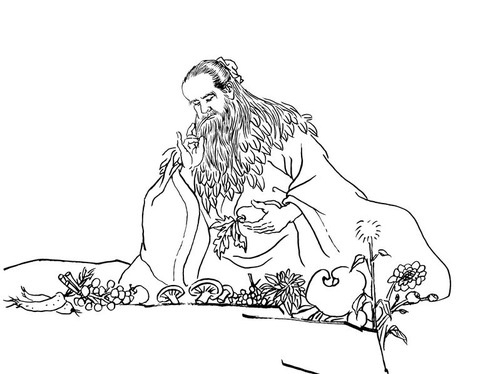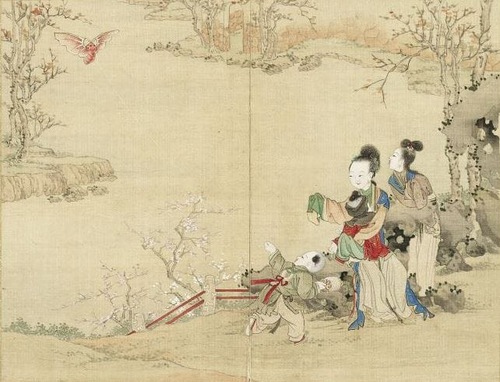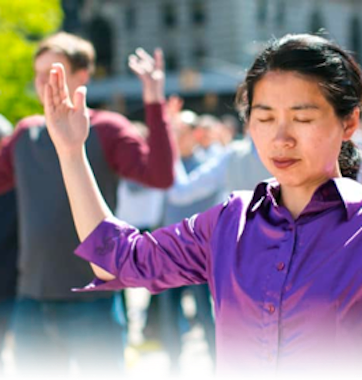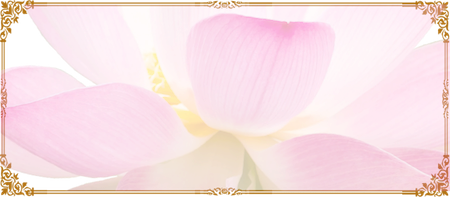(Minghui.org) The Vernal Equinox, also known as the Spring Equinox, is the fourth of the 24 solar terms defined in ancient China and the midpoint of the 90 days of spring. On the day of the Vernal Equinox, half of spring has passed. It falls around March 21 each year in the Gregorian calendar. The Vernal Equinox period in 2024 is from March 20 to April 3.
Lao Tzu said, “All things begin to grow on the Vernal Equinox.” Farmers also say, “Wheat starts to sprout on the Vernal Equinox, a moment worthy of a thousand taels of gold.” This means that by the Vernal Equinox, the winter wheat has survived the cold weather and started to actively grow, a crucial and precious time for farm work to ensure a good harvest.
Equal Night and Day, Balance of Heat and Cold
In the Northern Hemisphere, when the sun passes through the ecliptic from south to north and intersects the equator at zero degrees of ecliptic longitude, it shines vertically on the equator. This position is called the Vernal Equinox, and at this point, day and night are equal in length, each 12 hours long.
Traditionally, spring refers to the period between the beginning of spring and the beginning of summer in the 24 solar terms, and the Vernal Equinox is right in the middle of spring, dividing the season precisely in half.
The Vernal Equinox has meaning for two phenomena: It marks the very middle of the spring season and the day itself is divided into equal amounts of light and dark. So, in ancient times, people also called the Vernal Equinox “Mid-Day,” “Equator of Day and Night,” or “Mid-Spring.” From this day until the Summer Solstice, the amount of daylight gradually increases in the Northern Hemisphere and decreases in the Southern Hemisphere. Therefore, at the Vernal Equinox, nature reaches its balanced state between yin and yang.
The balance of day and night and that of heat and cold, when corresponding to worldly affairs, refers to the promotion of “justice.” People in ancient China made it a point on the Vernal and Autumnal equinoxes to adjust their weights and measures used in the marketplace to make sure their transactions were fair and to prevent disputes. For the individual, it was a reminder to follow the way of heaven in daily life—to be honest in dealing with others, to refrain from immoral and virtue-compromising conduct, and to treat others fairly.
Vernal Equinox Customs and Maintaining Health
The Festival of the Medicine King
The Festival of the Medicine King is a unique folk tradition in China. It began in the Later Tang Dynasty and became popular in the Song Dynasty. It started as a tradition to worship Shen Nong (Divine Farmer), the Medicine King and the first Yan Emperor, a deity in Chinese folk religion.
Shen Nong was regarded as one of the three ancient emperors, the god of agriculture and the ancestor of herbal medicine in ancient China. He is revered as the King of Chinese Medicine, the King of Five Grains, the First Emperor of Five Grains, and the Great Emperor Shen Nong.
 Portrait of Shen Nong, painted in the 18th century “Portraits de Chinois celebres” collected by the National Library of France (Public domain)
Portrait of Shen Nong, painted in the 18th century “Portraits de Chinois celebres” collected by the National Library of France (Public domain)
As the population increased in Shen Nong’s time, fishing and hunting could no longer sustain basic human needs. In addition, human souls were no longer pure and were increasingly deviating from nature. The natural environment continued to deteriorate, and humans began to be troubled by diseases.
According to Ban Gu (32-92 CE), a historian and politician in the Eastern Han Dynasty, in the Confucian text Bai Hu Tong, Shen Nong taught people how to farm according to the timing of heaven and benefits to the land. He also invented farming implements and used his divine power to benefit the people. He was thus revered as Shen Nong (Divine Farmer).
Shen Nong personally tested herbs and differentiated grains. He also invented the plow, Leisi (耒耜), and other farming tools. He led mankind into the era of agriculture.
Huangfu Mi was a scholar, physician, and master of Chinese Acupuncture and Combustion who lived through the late Eastern Han Dynasty, the Three Kingdoms Period, and early Western Jin Dynasty. He said in Di Wang Shi Ji that the Yan Emperor who grew up by the river taught people how to grow five grains for food so that they did not need to kill animals. He tested hundreds of herbs to cure diseases, thereby saving many lives. The common people used the herbs in daily life without knowing how they had come to be.
Shen Nong tested hundreds of herbs and identified 365 kinds as herbal medicine. Among them, 120 were high-grade herbs that could maintain health, 120 were mid-grade herbs that could nourish the mind, and 125 were low-grade herbs that could cure diseases. He wrote the book Shen Nong Ben Cao Jing (Divine Farmer’s Classic of Materia Medica), which has been passed down to this day. Together with the later Huangdi Neijing, Nanjing - The Classic of Difficult Issues, and Treatise on Febrile and Miscellaneous Diseases, they are considered as the four classics and the source of traditional Chinese medicine in treating diseases.
 Shen Nong Testing Hundreds of Herbs (Minghui.org)
Shen Nong Testing Hundreds of Herbs (Minghui.org)
According to the Divine Farmer’s Materia Medica, Shen Nong tasted hundreds of herbs, and in one day he encountered 72 poisons. He chewed some tea leaves that blew near him and recovered. Anren County in Hunan Province was said to be the place where Shen Nong tasted hundreds of herbs and first discovered the beneficial properties of tea.
In memory of Shen Nong, the people of Anren built Shen Nong Hall and Yaowang Temple (today’s Wanfu Temple) in Xiangcaoping and sculpted a statue of Shen Nong. In order to commemorate Shen Nong’s great contributions to farming and herbal medicine, the people in Anren established a three-day festival around the Vernal Equinox to worship Yan Emperor Shen Nong, the Medicine King in Xiangcaoping, where people burn vanilla and incense sticks.
Such activities were recorded in Anren County Chronicles in the Qing Dynasty, and this tradition has lasted for over a thousand years to date since 935 AD in the Later Tang dynasty. Anren is known in China for its many temples, nunneries, and halls of worship, which enjoy a long history and many worshipers.
Worshiping the Sun
Emperors in ancient China also worshiped the sun on the Vernal Equinox, a tradition that started in the Zhou Dynasty and recorded in the Book of Rites. In Di Jing Sui Shi Ji Sheng by Pan Rongbi in the Qing Dynasty, it also noted that “Worshiping the sun on the Spring Equinox and the moon on the Autumnal Equinox are grand ceremonies—people are not allowed to worship by themselves.”
The Temple of the Sun, now located outside the Chaoyang Gate in Beijing, used to be where emperors of the Ming and Qing dynasties worshiped the sun on the Vernal Equinox. They would kneel down three times and bow nine times. It was a grand, solemn ceremony.
People in ancient China practiced archery on the Vernal Equinox, improved their martial arts skills, and observed virtue. The kings and emperors did this on a grand scale while the common people practiced locally. In Hanshu Five Elements Chronicles, it says, “Ritual shooting with bow and arrow on the Spring Equinox to straighten out the yang energy.”
Spring Outings
Around the Vernal Equinox, the weather is warm and sunny. In most areas, flowers are starting to bloom, the birds are singing, and people begin to go on outings. The intrinsic meaning of a spring outing is to comply with the seasons and the harmony of man and nature.
As things are starting to sprout in the warmth of spring, people leave their homes to enjoy the beauty of nature and the freshness of the air and enjoy Mother Nature. Spring outings integrate the seasonal energy and promote the flow of yang energy within the human body, bringing great benefits to one’s health.
Kite flying is one of the most typical outdoor activities. With the wind picking up in spring, it’s a good time for kite flying. Kites were called “hawks” or “gledes” in ancient times. Both are fierce birds of prey. At that time, kites were mostly made of silk or paper in the shape of an eagle, so they were often called paper hawks or gledes. Later, people invented all kinds of kites.
In addition to kite flying, appreciating flowers and trees, swinging, playing cuju (an ancient Chinese ball game), tug-of-war, and climbing mountains and visiting rivers are all traditional outdoor activities.
 “Sheng Ping Shi Le Tu”(National Palace Museum, Taipei)
“Sheng Ping Shi Le Tu”(National Palace Museum, Taipei)
Pictures of Spring Oxen
In Chinese traditional culture, during the Vernal Equinox, people would hand out pictures of spring oxen from door to door. Such pictures are printed on red or yellow paper with the solar terms and farmers plowing the fields. In the past, most of the people who handed out such pictures were good at talking and singing, and when they delivered pictures, they would say auspicious words about spring plowing in beautiful rhymes.
Gluing Birds’ Beaks
Traditionally, on the day of the Vernal Equinox, not only would farmers work hard in the fields, they also eat sticky rice balls. They would also cook a dozen such rice balls without filling, pierce them with thin bamboo sticks, and stand them on the edge of their fields to feed the birds, which is known as “gluing sparrows’ beaks,” in the hope that this would prevent the birds from pecking at the crops to ensure a good harvest.
Health Maintenance
Since the Vernal Equinox equally divides day and night, cold and heat, people should pay attention to keeping a balance of yin and yang in the human body to maintain good health. Therefore, “adjusting yin and yang, supplementing if it is insufficient, and purging if there is excess” (Huangdi Neijing, Su Wen, Gu Kong Lun) is observed.
In traditional Chinese medicine, the five internal organs of the human body correspond to the four seasons, so one pays attention to “nourishing in four seasons,” meaning to nourish the liver in spring, the heart in summer, the lungs in autumn, and the kidneys in winter. Because the five internal organs have their defined colors (green for the liver, red for the heart, yellow for the spleen, white for the lungs, and black for the kidneys), food of those colors nourish their respective internal organs. Therefore, around the Vernal Equinox, people tend to eat more green fruit and vegetables that are more abundant in spring.
As the saying goes: “Spring soup goes into the internal organs and cleanses the liver and intestines; the whole family, old and young, is safe and has good health.” The spring vegetable used for the soup is wild amaranth, also known as “chunbi artemisia” in the countryside. On the day of the Vernal Equinox, people would go to the fields to pick the wild amaranth and make a “spring soup” with fish fillets, in the hope that their whole family would be safe and healthy.
In addition, people believe that they must maintain a happy and positive mental state, take moderate exercise, and follow a regular daily routine to successfully maintain good health.
 February in Early Spring, painting by Fang Cong in the Qing dynastyPart of Fang Cong’s Eight Paintings of Landscape-Album-Taoyuan Yanke,(National Palace Museum, Taipei)
February in Early Spring, painting by Fang Cong in the Qing dynastyPart of Fang Cong’s Eight Paintings of Landscape-Album-Taoyuan Yanke,(National Palace Museum, Taipei)
Epilogue
Traditional culture incorporates rules and regulations, moral norms and etiquette, which were largely formulated by the ancients based on the right time and place, as reflected in the saying “First observe the heavens and earth, and then decide on human affairs.” In other words, worshiping heaven and harmonizing with nature reflects the moral state of ancient sages who acted according to such a principle and in teaching the future generations. Put simply, it is to achieve “the harmony of man and nature.”
It says in The Doctrine of the Mean: “The Mandate of Heaven is one’s nature, to follow one’s nature is Tao, and the practice of Tao is education.” It means that if people can assimilate to the Mandate of Heaven, they can be as prosperous and peaceful as heaven and earth.
Copyright © 2024 Minghui.org. All rights reserved.
Category: Traditional Culture









